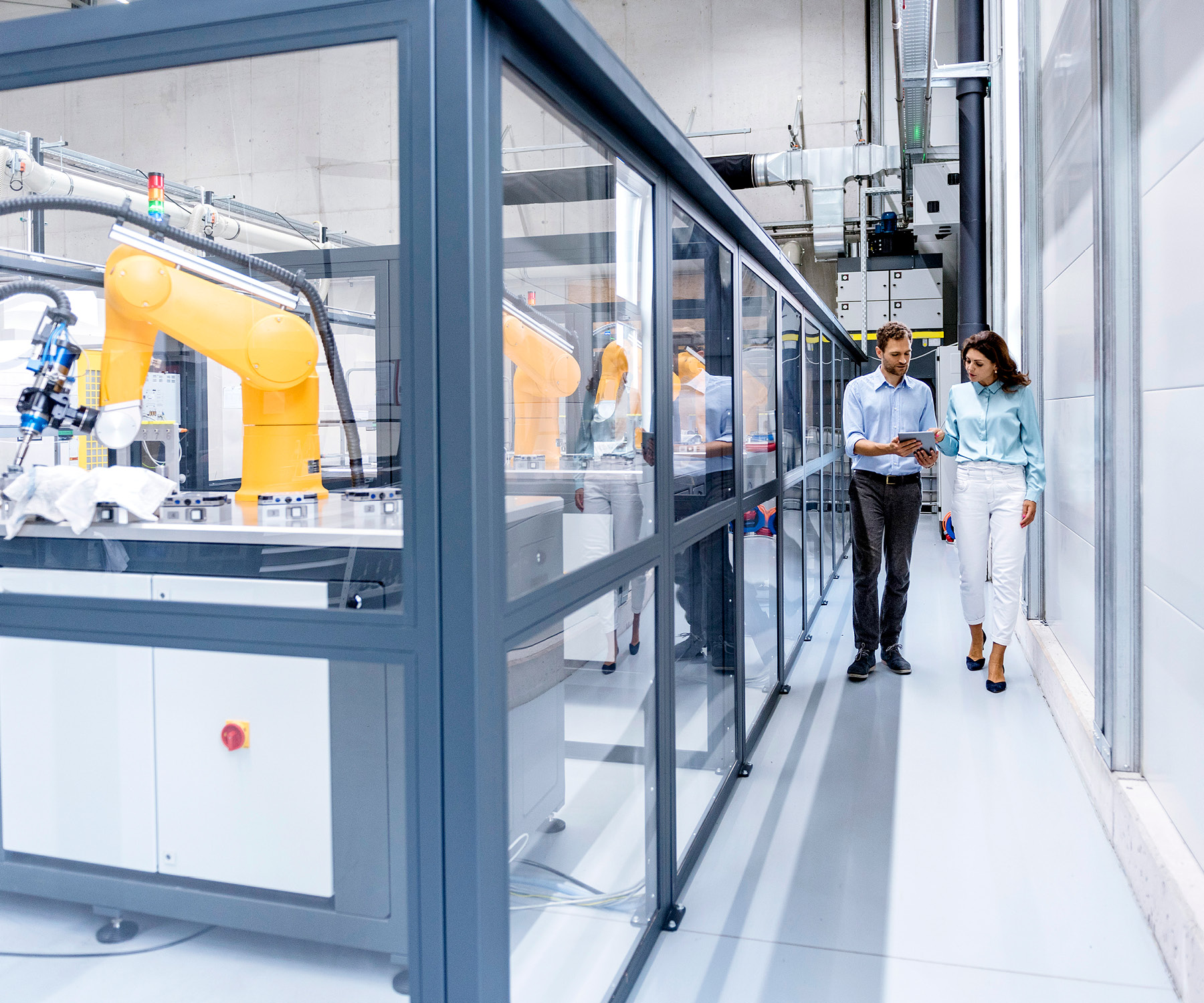Language
You can read the magazine in one of the following languages
A dilemma for digital leaders in this age is whether they should invest in human talent or automation technologies.
However, this is not a simple case of adopting one or the other. AI and automation technologies offer incredible opportunities, and at the same time, they have the potential to threaten the creative artistry of humans. While this shift toward new technology is pivotal for making data-driven decisions and improving productivity, it’s also necessary to maintain a symbiotic relationship between automation and human-centric processes.

Being a strong and effective digital leader in the age of automation means empowering employees to reach their full potential and ensure they feel valued, supported and not threatened by technology.
But even with automation, digital leaders should realize that people are at the heart of everything their organization does. They should strive to create a work environment that values human-centric elements such as empathy, compassion and inclusivity.
Being a strong and effective digital leader in the age of automation means empowering employees to reach their full potential and ensure they feel valued, supported and not threatened by technology.
The age of automation demands a different kind of digital leader who can effectively navigate the complexities and opportunities automation presents. Leaders of today’s digital world should ensure that their actions reflect and incorporate human values, ethics and wellbeing.
They are tasked with redefining traditional notions and philosophies of leadership to encompass the following criteria:
1. Embracing Automation Technologies: Adaptability is the new growth strategy. Digital leaders should remain open to embracing new automation technologies that drive innovation, efficiency and competitiveness.
2. Navigating the Change Together: While they embrace the new technologies, digital leaders should also guide their teams through the process of adapting to the same. This also involves helping teams understand the benefits of automation, such as increased efficiency and reduced manual labor.
3. Training and Upskilling: Automation technologies could soon transform the nature of the work. Thus, digital leaders should prioritize training and upskilling their human talent to ensure they possess the right skills needed to thrive in the automated work environment.
4. Balancing Automation and Human Touch: While automation has its own merits, it’s essential for leaders to not lose sight of the human element. They need to strike a balance between automation and the human touch to ensure employees feel valued and respected in this rapidly evolving landscape.
One of the critical aspects of human-centric digital leadership is fostering a culture of continuous learning and development. Leaders of today should put their people first and encourage them to acquire new skills and knowledge that help them with their personal and professional development.
At Textdrip, I have always been an advocate of helping employees acquire new skills and offer necessary monetary resources to continue their education with online courses. We have successfully established a culture of employee development.
By investing in employee development, digital leaders not only futureproof their organization but also create a more engaged and motivated workforce. They should actively promote work–life balance and the wellbeing of their employees.

Humans play an indispensable role in the age of automation.
In an age where technology and automation have gained precedence, digital leaders should take proactive steps to prevent burnout. Their role is to ensure that their employees are able to maintain a healthy balance between their work and personal lives. This can include offering flexible work arrangements, providing mental health support and promoting a culture of mindfulness and self-care.
While it’s easy to preach and hard to walk the talk, I have successfully implemented a system within Textdrip that allows employees to lead a positive and supportive work culture. As a digital leader of a tech organization myself, I have built a more resilient and innovative culture that is better equipped to thrive in the age of automation.
As the Founder and CEO of a tech company, I’ve dealt with two phases: The first is creating a product that automates customer communication, and the second is putting together a great team of managers and executives.
While navigating through these phases, I’ve dealt with several challenges that helped me understand the importance of putting people first. I emphasized hiring the right people with the right skills and experience – people who can quickly adapt to the evolving digital landscape. Through these hirings, here’s why I think humans play an indispensable role in the age of automation:
1. Creative Thinking: Humans can think creatively and brainstorm groundbreaking ideas that AI-driven automation tools are yet to get hold of. I have realized that technology can aid the execution of ideas, but those ideas have always come from creative thinkers.
2. Empathy and Understanding: Every human being feels certain emotions and has specific needs. Empathy allows us to comprehend those needs and emotions that are essential attributes for customer service, conflict resolution and fostering robust interpersonal connections.
3. Flexibility and Adaptability: Regardless of how well-executed technology is, it is incomparable to humans’ capabilities to adjust to new situations and unforeseen circumstances. This flexibility and adaptability differentiate us from AI.
As automation reshapes the business landscape, I believe that digital leaders should ingrain the habit of becoming adaptable, innovative and empathetic within themselves. Embracing these qualities can help your organization thrive in an increasingly competitive and automated world where it has become necessary to ensure that the humans you employ remain engaged, motivated and empowered.
Human-centric digital leadership is all about putting your people first in the age of automation. By prioritizing their wellbeing and growth, leaders can build a more resilient workforce that’s better equipped to drive innovation in today’s automated world.

It’s possible to combine the quick execution power of automation with human intelligence to unlock new levels of efficiency and future viability.
Digital leaders also have an additional responsibility to assess the impact of automation on job performance. They need to make informed decisions to invest in core elements of technology and humans to navigate the age of automation successfully.
It’s possible to combine the quick execution power of automation with human intelligence to unlock new levels of efficiency and future viability. By embracing human-centric digital leadership, leaders can ensure that their organizations not only survive but thrive in the ever-evolving digital landscape.

Phil Portman
Contributor Collective Member
Philip Portman is the Founder and CEO of Textdrip, a business texting platform for ecommerce, insurance, hotels and hospitality, real estate and health care. He has created several startups from the ground up and is a leading expert in SMS marketing and automation in digital marketing. Find out more at https://textdrip.com/about-us
